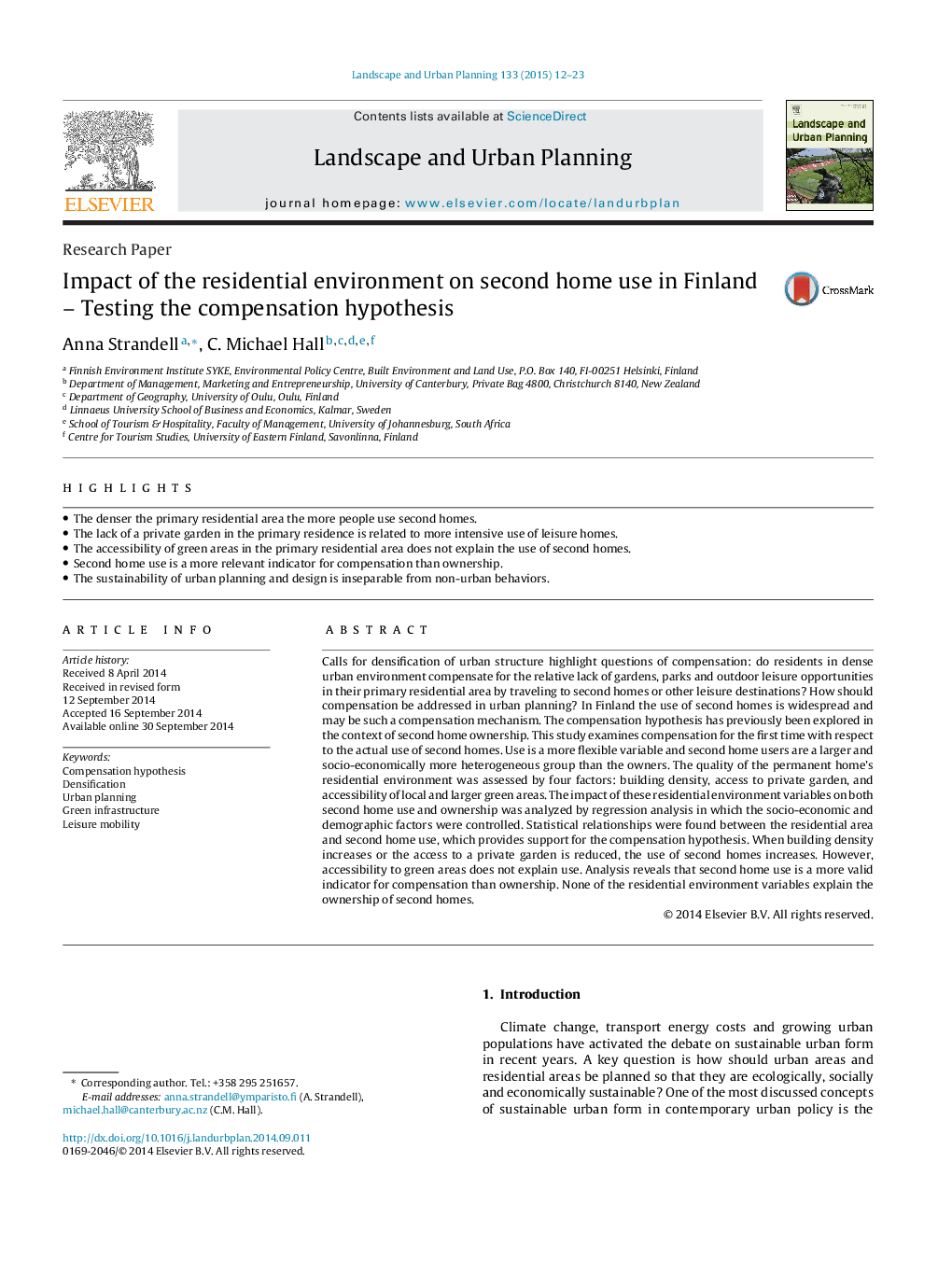| کد مقاله | کد نشریه | سال انتشار | مقاله انگلیسی | نسخه تمام متن |
|---|---|---|---|---|
| 1049198 | 1484625 | 2015 | 12 صفحه PDF | دانلود رایگان |
• The denser the primary residential area the more people use second homes.
• The lack of a private garden in the primary residence is related to more intensive use of leisure homes.
• The accessibility of green areas in the primary residential area does not explain the use of second homes.
• Second home use is a more relevant indicator for compensation than ownership.
• The sustainability of urban planning and design is inseparable from non-urban behaviors.
Calls for densification of urban structure highlight questions of compensation: do residents in dense urban environment compensate for the relative lack of gardens, parks and outdoor leisure opportunities in their primary residential area by traveling to second homes or other leisure destinations? How should compensation be addressed in urban planning? In Finland the use of second homes is widespread and may be such a compensation mechanism. The compensation hypothesis has previously been explored in the context of second home ownership. This study examines compensation for the first time with respect to the actual use of second homes. Use is a more flexible variable and second home users are a larger and socio-economically more heterogeneous group than the owners. The quality of the permanent home's residential environment was assessed by four factors: building density, access to private garden, and accessibility of local and larger green areas. The impact of these residential environment variables on both second home use and ownership was analyzed by regression analysis in which the socio-economic and demographic factors were controlled. Statistical relationships were found between the residential area and second home use, which provides support for the compensation hypothesis. When building density increases or the access to a private garden is reduced, the use of second homes increases. However, accessibility to green areas does not explain use. Analysis reveals that second home use is a more valid indicator for compensation than ownership. None of the residential environment variables explain the ownership of second homes.
Journal: Landscape and Urban Planning - Volume 133, January 2015, Pages 12–23
